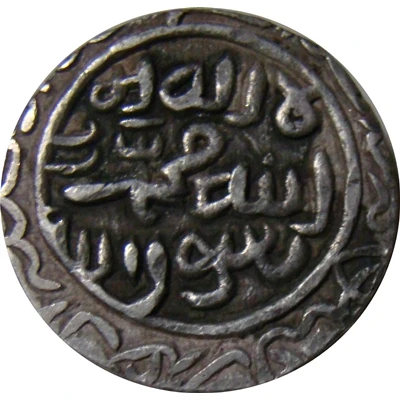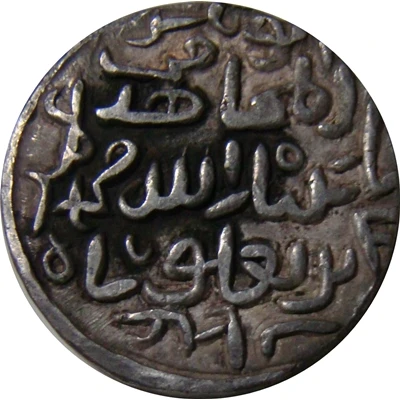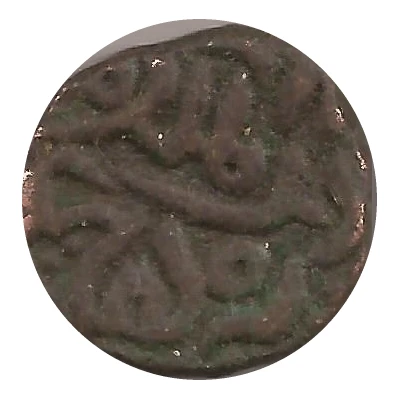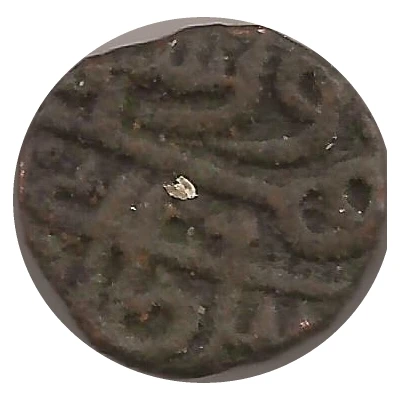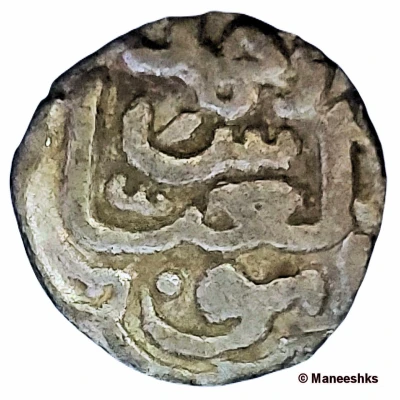
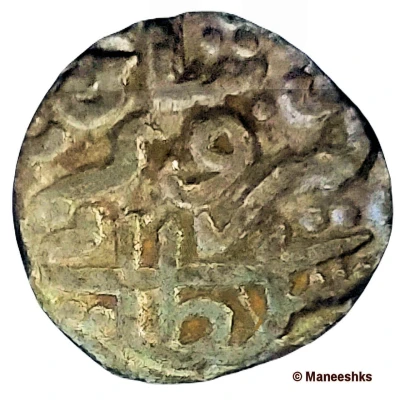

© Maneeshks (CC BY-NC)
32 Rati - Firuz Shah Tughluq ND
| Billon (32 Rati) | 3.5 g | 13.5 mm |
| Issuer | Sultanate of Delhi (Indian Sultanates) |
|---|---|
| Sultan | Firuz Shah Tughlaq (1351-1388) |
| Type | Standard circulation coin |
| Years | 1370-1388 |
| Value | 32 Rati (1⁄60) |
| Currency | Tanka (1206-1526) |
| Composition | Billon (32 Rati) |
| Weight | 3.5 g |
| Diameter | 13.5 mm |
| Thickness | 3.3 mm |
| Shape | Round (irregular, Weight varies 3.5-3.6g) |
| Technique | Hammered |
| Orientation | Variable alignment ↺ |
| Demonetized | Yes |
| Updated | 2024-10-05 |
| Numista | N#372242 |
|---|---|
| Rarity index | 97% |
Reverse
`abu'l 'abbas ahmad'
[read from bottom upwards]
Script: Arabic
Translation: Abu'l 'Abbas Ahmad was the name of the caliph who reigned from 1370–1394 CE.
Edge
Plain
Comment
HistorySultan Firuz Shah Tughlaq (1309 – 20 September 1388) was a Muslim ruler from the Tughlaq dynasty, who reigned over the Sultanate of Delhi from 1351 to 1388 CE (AH 752-790). His father's name was Rajab (the younger brother of Ghazi Malik) who had the title Sipahsalar. His mother Naila, a Hindu woman, was a Bhati rajput from Dipalpur, which is now in the Punjab region of Pakistan.
Coinage
A majority of Firuz Tughluq's coinage was in billon and copper. In billon the main denominations are Tanka of 80 rati and 32 rati coins. There are also denominations of 48 and 24 rati, and a small, very rare type probably intended as a Jital. Firuz Shah's billon and copper coins were so popular that they continued to be struck long after his death, with posthumous dates. The main mint was Dehli (Hadrat and Dar al-Mulk) and a rare billon issued at Shat-i-Sind.
[Source: Goron & Goenka]
Interesting fact
One interesting fact about this coin is that it was issued during the reign of Firuz Shah Tughluq, who was the third Sultan of the Tughluq dynasty and ruled the Sultanate of Delhi from 1351 to 1388. He was known for his military campaigns and his efforts to reform the administrative and economic systems of the empire. The coin itself is made of billon, a type of alloy that is composed of a mixture of metals, and weighs 3.5 grams. It is a standard circulation coin, indicating that it was widely used in everyday transactions during that time period.
